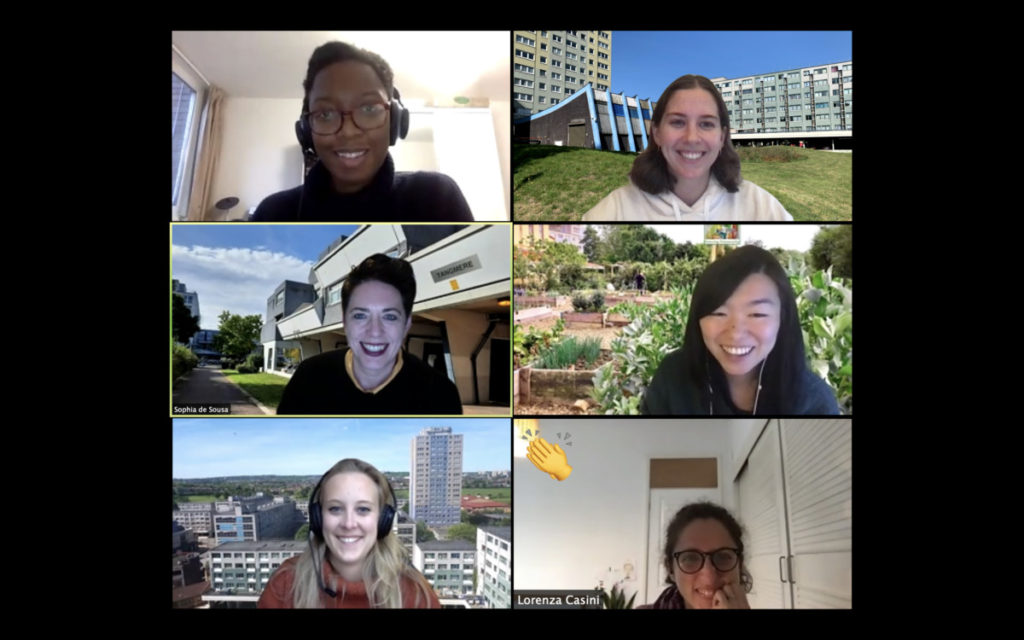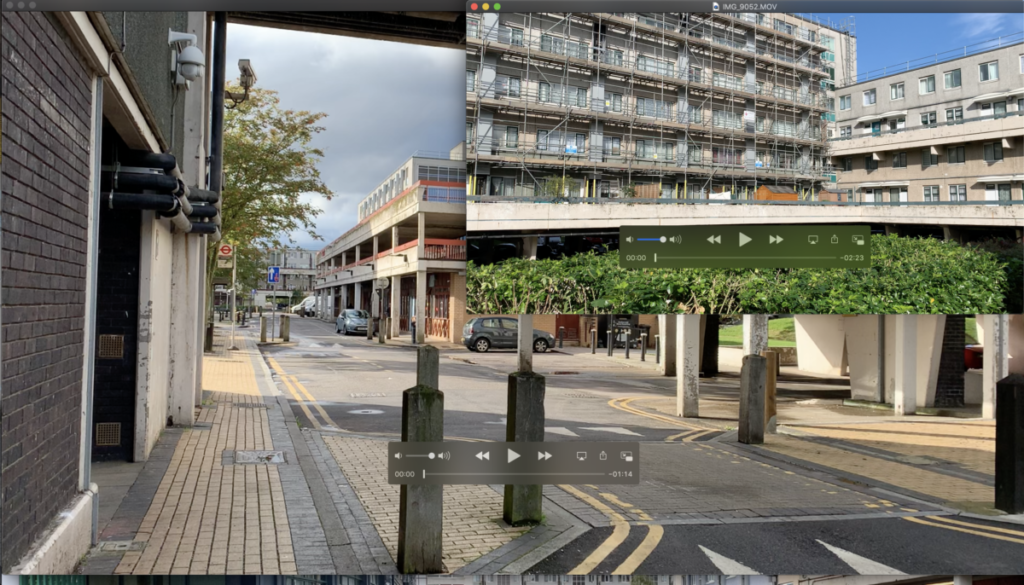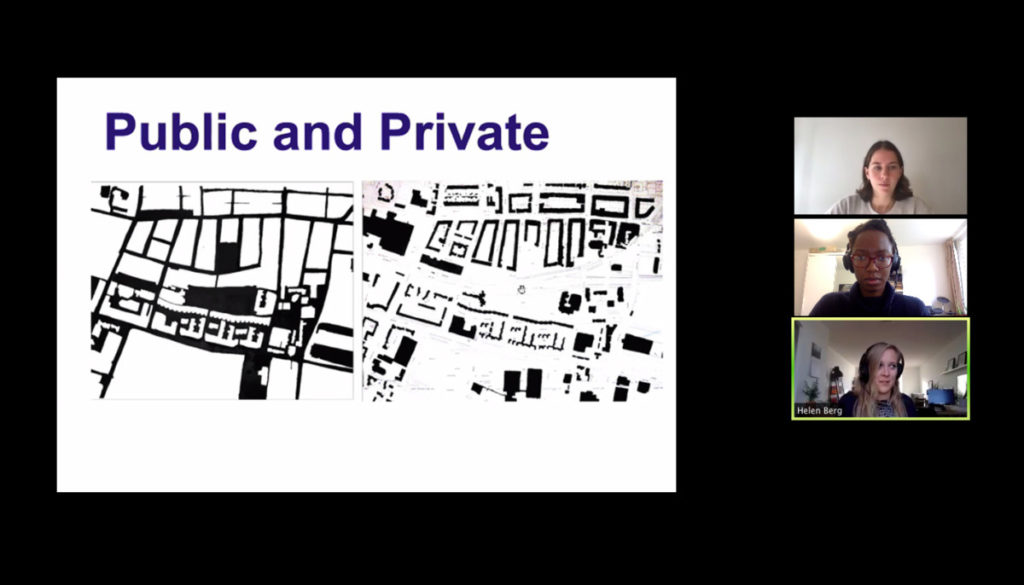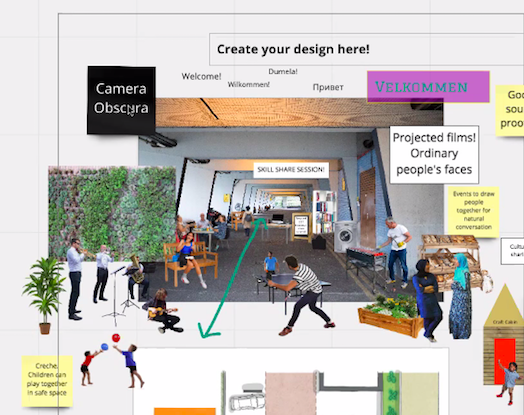Written by:
Last week, The Glass-House Team delivered our first completely digital version of our Homes & Neighbourhoods by Design course for members of the Community Design Group on Broadwater Farm Estate in North London. This blog, one of a series sharing our reflections on taking our Design Training online, focuses on key differences to facilitation.
There is no doubt that facilitating a digital workshop is a very different experience from being in a room with people for a face-to-face workshop. In the case of a creative design workshop, which is built on interactive co-creation activities that go beyond the post-it, there are quite a few things to consider, and some marked differences between online and face-to-face environments.
Welcoming people in
In person you can invite people into a space, offer them a cup of tea, have an informal chat, and encourage them to meet and get to know other participants. Creating that sense of welcome and informality in a digital space tends to be more about making sure first that they are able to access the chosen platform and are comfortable with the technology. We found that reassuring them that we are all still learning served as a useful way to make the space feel less intimidating.
Unlike online events, in which participants can be passive and silent members of an audience, participants in an interactive digital workshop must spring into action early on. For many, having to see themselves on the screen is a distracting and uncomfortable experience. However, once people are in and comfortable, the digital environment can feel more informal and one over which participants have some control.

Experiencing place
When focusing on the design of places, it’s particularly helpful to refer to the spaces around us as a shared frame of reference and a starting point for exploration. Whether in a room or out and about on a walkabout, asking people to react to the spaces around them, and exploring the diversity of experiences of a shared space, is a crucial part of design capacity building. While we can achieve some of this through photography and video, our experience and analysis of the place is both conditioned and limited by the vantage point captured on screen. That said, more targeted digital exploration can help bring focus to the discussion, and help ensure that there is a joined up conversation about specific aspects or features of a place.

Inclusion
Digital environments can offer fantastic gateways to new audiences who due to location, mobility, time or other constraints would not otherwise be able to join in-person sessions. Of course, we must also be mindful that they can also exclude those without access to or confidence in using technology. There are also still areas in which broadband quality and coverage makes participation in digital workshops challenging.
While we certainly grappled with varying levels of confidence in the technologies we were using, we did find that one real advantage to digital platforms is that they enable participants to speak using either the microphone or the chat function. This additional way to contribute in real-time is empowering for some who might feel shy speaking in front of others. People being able to turn off their cameras also removed some level of anxiety for participants. One of our participants told us he was taking part in the training while in bed.
I did miss the ‘incidental conversation’ amongst residents and facilitators in the down time between activities, and felt like people were unable to get to know each other in the same manner as the live workshops. This being said, being able to see faces on Zoom helped, and I felt like I got to know one or two participants quite well who were repeatedly in my ‘break-out room’. – Glass-House Enabler from Urbed
Nurture
One of the important skills an experienced facilitator develops is to spot participants who are struggling to engage, and to quietly and discreetly help them ease into the activity. In a face-to face environment, it is quite simple to let the other members of a group crack on with an activity and provide some additional support to the person in need. In a digital room, it is not possible to do this in the same way, as it is only possible for one conversation to happen at a time.
Breakout rooms are useful to divide participants for group work, but building one-to-one support into that context is difficult, and requires patience and understanding from the other participants involved. What can be achieved with a quick glance across the room and targeted support in a face-to-face environment, is a bit more complicated and methodical in a digital room.
Pace
At first glance, one would think you can do everything a bit more quickly and efficiently online. In didactic terms, this is not the case. We found that the pace of activities, particularly interactive and group work, had to slow down. This is partly to do with adjusting to the digital tools being used. Some activities, such as a virtual walking tour of the site, required greater planning and preparation time before the workshop, but during the digital workshop allowed us to move a large group of people through a large site quite quickly. It also made it possible to keep people inside and dry on a rainy day.
Presenting
In many ways, presenting at a digital event is a lot easier than in a face-to-face event. With no need to travel and the ability to quickly share your screen and slides with participants, it’s easy to pop into and contribute to an event anywhere in the world.

Questions can be easily contributed and managed through a chat function, and things can feel quite smooth and orderly.
It is also useful to be able to move your cursor over specific items as you talk to direct focus onto specific images or object
– Glass-House Enabler from Urbed
However, there are some real challenges to online presenting. Firstly, there is a real difference to the connection you have with your audience. While a speaker can sense the interest and vibe in a room, and adapt pace, tone and content accordingly, this is extremely difficult to do in a virtual setting.
Co-creation activities
One great advantage of the digital space is that you can use a range of techniques that allow you to quickly move and combine digital elements and apply layers of information. Another advantage is that you can design workspaces that move through a systematic and well documented series of steps, zooming in and out of detail and in an expandable workspace that is not confined by the size of a physical table and how many people you can get round it.
However, for some, this kind of creative space is confusing and intimidating, and if participants are on different types of devices, and with different size screens, it is sometimes difficult to find that sweet spot for scale and area of focus for the digital workspace that means that everyone can contribute equally and confidently.

We have found that tactile making is a highlight for many in our creative face-to-face workshops. We use simple arts and crafts materials (such as card and paper, scissors, glue, pipe cleaners, plasticine) with which most people have some familiarity, and feel comfortable having a play. The playful environment creates a space to explore quite complex and challenging ideas and issues. Digital making can be equally playful, but seems to have a higher threshold for participants to feel comfortable using the tools.
Control over environment and experience
In facilitation terms, we were also mindful that it is a space that has many more elements beyond our control, for example: quality of internet connection, spectrum of devices being used, the environment participants are working in and potential distractions around them. This impacts our ability to make it feel a safe, welcoming and productive space for all involved. It is also a space with a lot going on, in terms of managing technology and users, sharing screens, keeping an eye on messaging in the chat, of participants raising their hands virtually and of people falling in and out of connectivity.
Digital workshops are deceptively resource-heavy, both in terms of the time required to design and prepare a workshop, and the number of facilitators required to deliver it. While for an event with presentations, speakers and panellists, digital environments make it possible to expand the number of participants without having an impact on the quality of the experience. In a co-creation workshop space, the ratio of facilitators to participants is notably higher, particularly if the participants are not familiar with the tools being used.
Overall however, I think that the sessions went really well and were enjoyable – and I hope that the participants gained some useful knowledge and experience. They really impressed me with insightful considerations within the design workshop and mapping exercise, and showed skill in identifying and matching the architectural drawings.
– Glass-House Enabler from Urbed
Closing thoughts
Our overwhelming feeling was that, despite being experienced and confident facilitators in face-to-face environments, we still have a lot to learn about the full potential, and limitations, of this new arena. There is a whole new range of tools opening up to us, and we must embrace and explore them. What is clear to us is that both digital and face-to-face workshops have their strengths and weaknesses, and will feel more or less inviting and accessible to different people. In either case, it is important to step into that space as a facilitator with an awareness of those differences, and of what is achievable in the time you have and with the skills and confidence both within your facilitation team, and among participants.
Explore our reflections on digital Design Training with our three linked blogs, each of which focuses on a specific area of consideration:
- Neighbourhoods by Design Digital: reflecting on a digital design workshop offers an introduction to our Design Training and the context into which we injected our digital design workshop.
- Exploring the back end: tools and practicalities of online creative workshops considers the logistics of setting up a digital design workshop .
- Capturing and sharing learning from online workshops looks at differences between documenting face-to-face and digital workshops.

